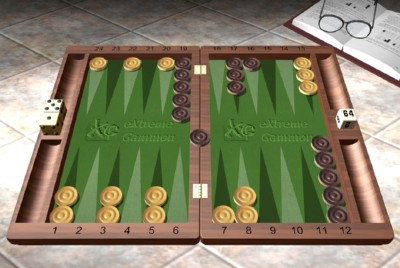Cash game, Center cube.

Should White double? If he does, should Black take, drop, or beaver?
In this position we have an opening blitz with a few little twists we don’t always see in such situations. Let’s quickly review the features of the position and look at which are important and which are not.
White has his 5-point instead of his 6-point. This looks like it might matter, but it doesn’t. If Black eventually anchors, there’s just a tiny difference between anchoring on the 6-point and anchoring on the 5-point.
White has more shots at a second blot. This is a big deal. Take a look at the next position, which is a more normal blitz.

Position A: White on roll.
Black ran out with an opening 6-4, White made two points with 5-5, and Black danced. Here White has only 11 shots at a second blot. In our original position, White has 25 shots (all 6s, all 4s, 5-3, 5-1, and 2-2). That’s a big difference.
White has three builders for his inner board. This is a small improvement over two builders as in Position A. White picks up three new numbers (2-1 and 1-1) which don’t hit but which do make an inner point.
White has a third checker back. This is a big negative for White, costing him 20 pips or so in the race and reducing the number of builders that can quickly reach an attacking position.
Compared to Position A, White has one big positive (more shots at a second blot), one big negative (a third checker back), and one small positive (a third builder in position). If we know the equity of Problem A, we know that our original position is better than that for White, but not overwhelmingly better.
Fortunately, Position A has been well understood for a long time. It was originally (in the 1960s and early 1970s) thought to be double and big pass. Hand rollouts, however, revealed that it was a clear double but a clear take, and it became a big money-maker in propositions against unschooled opponents.
If A is a double and clear take, then the original position must be better than that for White. We can certainly conclude it’s a big double and it’s only the take/drop decision that’s in question. In fact, it’s a drop, although a small one. The extra shots at the second checker are very important, as are the increased chances of making a fourth inner-board point. Put them together and Black can’t quite squeeze out a take.





